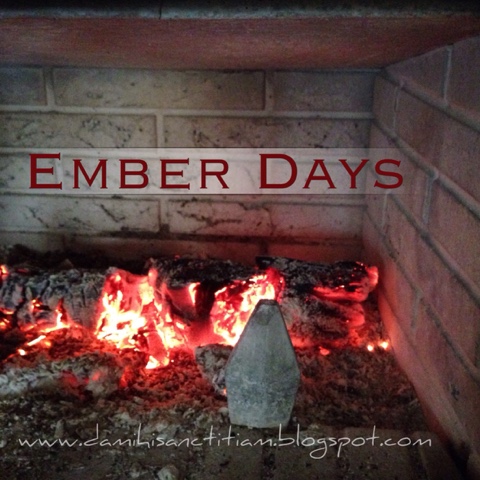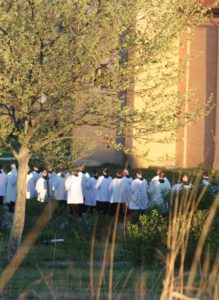

Taking a cue from the Old Testament, the quarterly fasts deliberately coincided with the cycle of planting and harvest. While we are tossed about in the vicissitudes of this life, we must always struggle, by fasts and alms, to destroy the sin which is caused by the weakness of the flesh and the uncleanness of our desires. We continue to know, as the course of the whole year returns, that we are unceasingly in need of purification. What is better than that human beings should do the will of God whose ‘image’ they bear, and by abstaining from food should also abstain from the law of sin? The four seasons of the year have their allotted time for that same observance of restraint. These quarterly Ember fasts are well-established in Rome by the time of St Leo the Great († 461), who offers this explanation: In time they came to be known in English as the “Ember Fasts” or “Ember Days” (perhaps in the same way that the seventh month was named Sept-ember, and the tenth month named Dec-ember).

It was termed the quattuor tempora (“four season” or quarter-time) fast. In the Western churches, the fast was shifted to a quarterly observance: December (in Advent), March (in Lent), June (after Pentecost), and September (after Holy Cross Day). Several early Latins fathers and authors adduce these words of the prophet Zechariah (among others) when he declares a particular fast four times each year: “Thus says the Lord of hosts: The fast of the fourth month, and the fast of the fifth, and the fast of the seventh, and the fast of the tenth, shall be to the house of Judah seasons of joy and gladness, and cheerful feasts.” (Zech 8.19) The same principle informs the Ember Day fast, which is as unique to the Western (Latin) churches as the Apostles Fast is to the Eastern churches. And the Lenten fast is rooted in the prior feast of Unleavened Bread in which the Jews recalled the wilderness journey to the Promised Land. For example, Pentecost commemorated the giving of the 10 Commandments before it became the celebration of the Descent of the Holy Spirit. Dorsky's films reveal the mystery behind everyday existence, providing intimations of eternity." - Steve Polta, San Francisco Cinematheque.Many of our liturgical celebrations find their origin in the Old Testament. Their luminous photography emphasizes the elemental frisson between solidity and luminosity, between spirit and matter, while his uniquely developed montage permits a fluid and flowing experience of time. They are occasions for reflection and meditation, on light, landscape, time and the motions of consciousness. Silence allows these delicate articulations of vision which are simultaneously poetic and sculptural to be fully experienced." - Nathaniel Dorsky “The films of Nathaniel Dorsky blend a beauteous celebration of the sensual world with a deep sense of introspection and solitude. The narrative is that which takes place between the viewer and the screen. The montage does not lead to verbal understanding, but is actual and present. I put shots together to create a revelation of wisdom through delicate surprise. In my work, the screen is transformed into a "speaking character", and the images function as pure energy rather than acting as secondary symbol or as a source for information or storytelling. Another is to create a film form which, in itself, has all the qualities of being human: tenderness, observation, fear, curiosity, the sense of stepping into the world, sudden murky disruptions and undercurrents, expansion, pulling back, contraction, relaxation, sublime revelation. In film, there are two ways of including human beings. Silence in cinema is undoubtedly an acquired taste, but the delicacy and intimacy it reveals has many rich rewards.

"The major part of my work is both silent and paced to be projected at silent speed (18 frames per second).


 0 kommentar(er)
0 kommentar(er)
